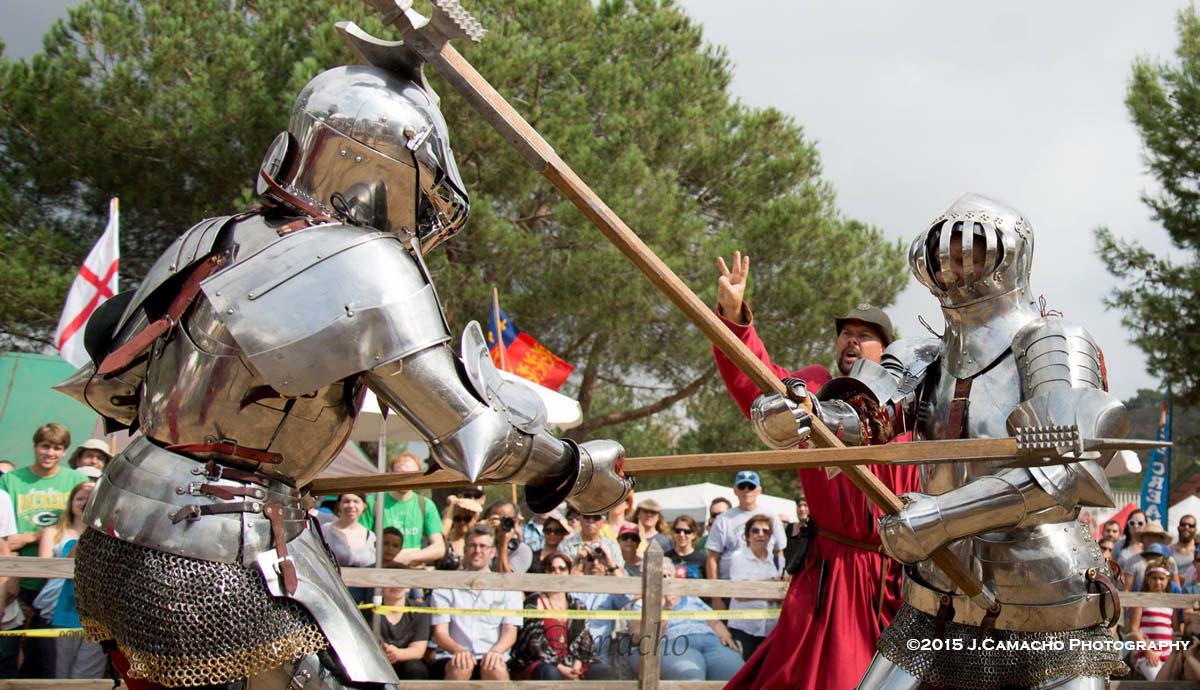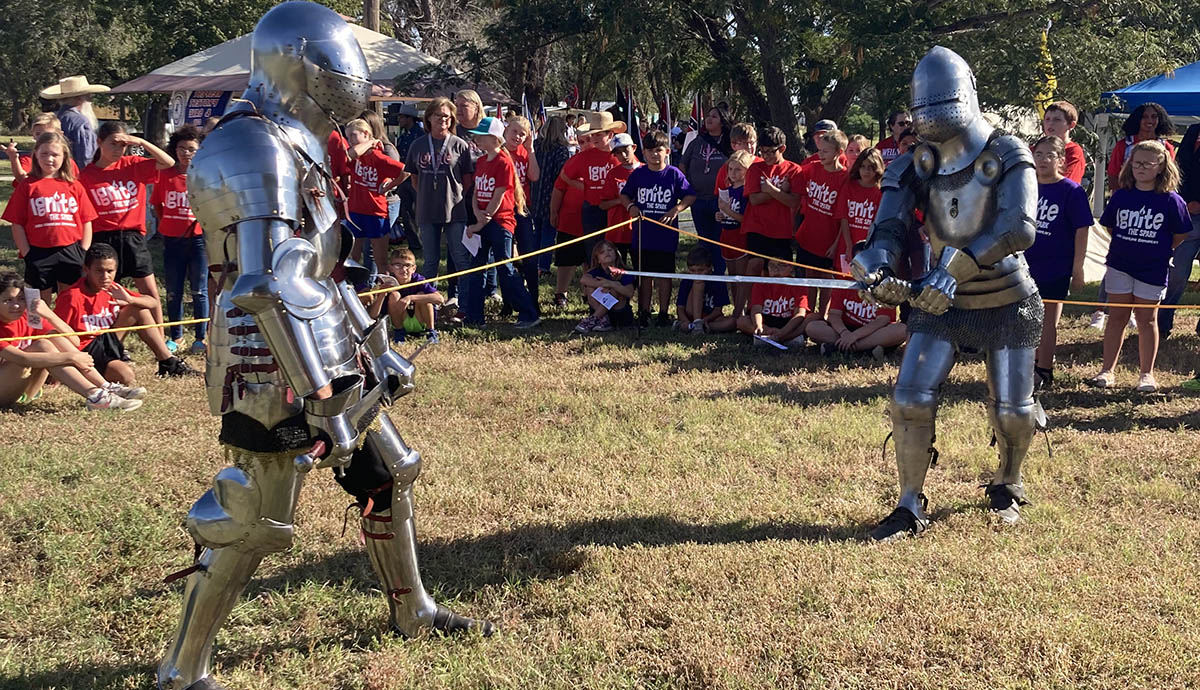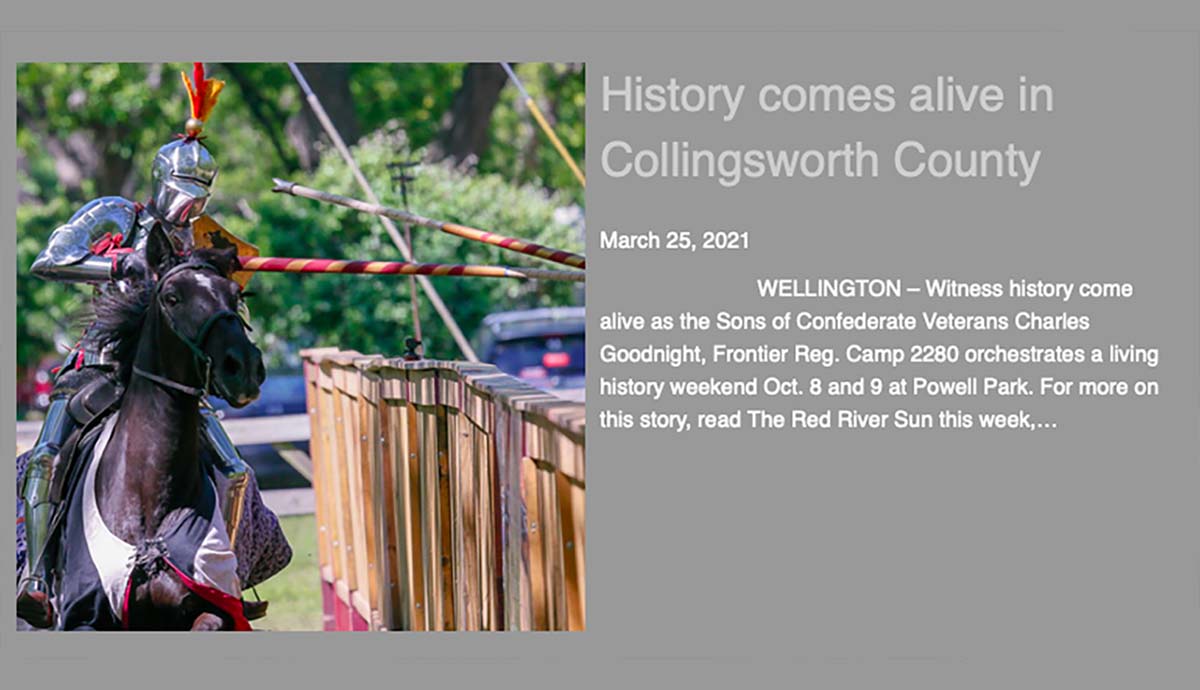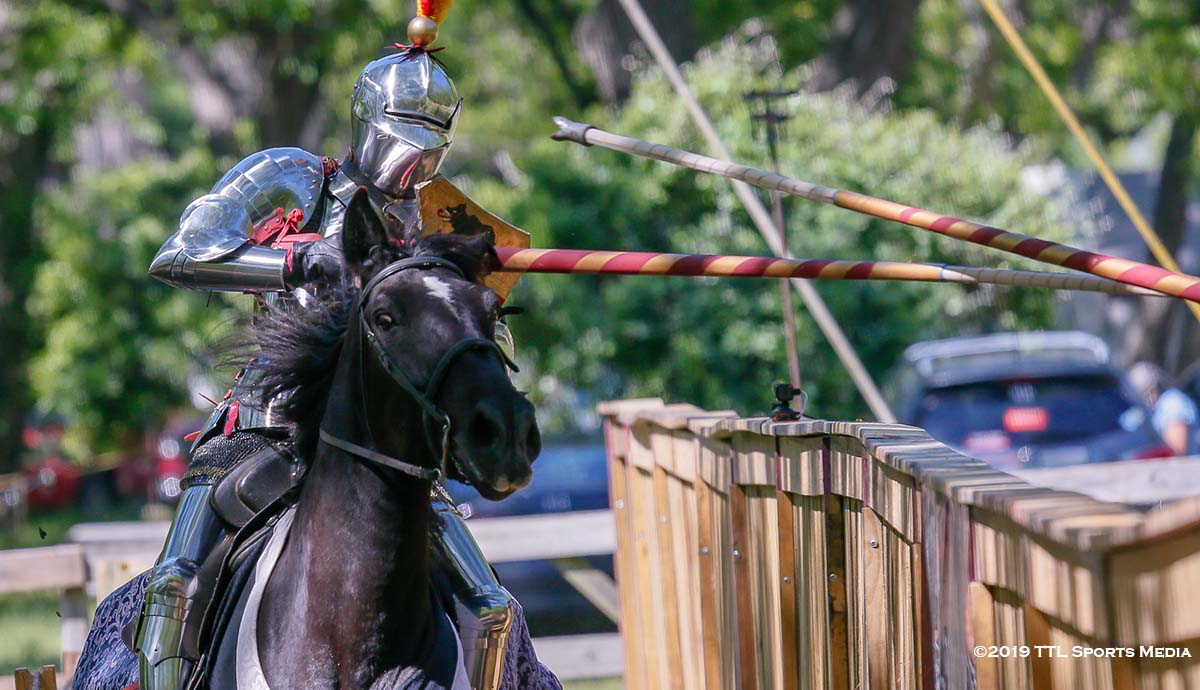
Whether judicial trial by combat, a chivalric duel, or a deed of arms, the pollaxe was the primary weapon of choice between armoured men. By the fifteen century, the sword and dagger were considered secondary weapons, only capable of causing harm to an opponent by exploiting the small gaps in his plate armour. The pollaxe was essentially an axe, hammer, and spear affixed atop a sturdy shaft about the height of its wielder. Near the beginning of the fifteenth century, an anonymous Milanese fencing master in service to Philip II "the Bold" ...

The third annual La Campaigne du Château 2023 was an event hosted by the Company of the Lynx Argent that took place from 23 - 26 February 2023 at Turner Falls State Park in Davis, Oklahoma. It was billed as "a weekend immersed in the time of the latter half of the Hundred Years' War. Events of the weekend include armored and unarmored passages of arms, hiking to and exploring a castle in armor, mixed armor group skirmishes, and everything from fighting to music and dancing, plus period food...

"History comes alive in Collingsworth County" reports the Red River Sun as Wellington hosted its first living history weekend on October 8 and 9, 2021, at Powell Park. The event was organized by members of Sons of Confederate Veterans Charles Goodnight, Frontier Regiment Camp 2280. Hundreds of students from area schools arrived by the busload throughout the day on Friday and rotated through several presentations representing different time periods, including the American Civil War, Native American history, and the late medieval period of Europe. ...

"Witness history come alive" as Collingsworth County hosts its first living history weekend on October 8 and 9, 2021, at Powell Park in Wellington, Texas. The event is being organized by members of Sons of Confederate Veterans Charles Goodnight, Frontier Regiment Camp 2280. Former resident Lonnie Colson will demonstrate what life was like for a 15th-century English knight on campaign. U.S. Army Indian War impersonators will appear along with the Dancing Eagles of Sapulpa, Oklahoma. There will be a chili cookoff and history symposium on Saturday. ...

I was invited by Steve Hemphill to participate in Lysts on the Lake 2019 located in the "Village of Castleton" on the beautiful shores of Lake Austin. Produced by a'Plaisance, Ltd., Lysts on the Lake is billed as the largest competitive jousting tournament in the world, hosting more than a dozen competitors each year. The "Lone Star Open Joust" is also one of the few events open to any equestrian who meet the qualifications. The tournament consists of three mounted events: le Chasse, or "the hunt"; Melée a'Cheval, or "combat on horse"; and Joust a'Plaisance, or ...

What kind of armour would an English man-at-arms have worn about the time of the first battle of St. Albans in 1455? While question may sound simple and straight forward, the answer took more than 3 years to fully realize. The greatest obstacle was the fact that almost no armour of verifiably English manufacture has survived from the fifteenth century. Who better to ask than the foremost experts on the subject: Dr. Tobias Capwell, curator of arms and armour at the Wallace Collection? Dr. Capwell has spent years studying ...
